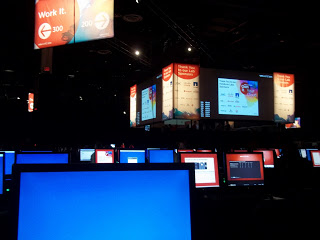Recently there has been a lot of talk from the community regarding bringing back the VMTN subscription, this is a software based subscription very similar to Technet subscriptions for annaul licensing for non production environments for personal use. Mike Laverick and Josh Atwell and many more have been very vocal about bringing back VMTN.
I never got to take advantage of the VMTN subscription (though I would have as it would have saved me a lot of time and rebuilds). I have taken advantage of Technet subscriptions for licenses and I have found it invaluable to have the licenses for software in my labs over the years. I will gladly pay the subscription fee for this licensing and I am sure many others would as well.
Josh Atwell compiled a list of VMTN related post here. VMware is very good at listening to their customers as showcased recently in the vRam Licensing where the community did not think the initial vRam allocations were sufficient, VMware came back in short order and doubled the allocations. Recently regarding the VMTN subscription, Duncan Epping posted on Yellow Bricks that VMware is looking into their options of how to bring back VMTN subscription and how it would work.
Please contribute and post your thoughts on the official community forum regarding VMTN
http://communities.vmware.com/message/1857571#1857571
Josh Atwell put together a suggested proposal of how he would like to see VMTN work, mine would be a variation of his design.
VMTN Proposal
2 Levels of VMTN
No media, download only
VMTN Admin (~$200/year)
- 1 year license Key. Renewable with new License Key
- 1 vCenter Server Max
- 3 ESXi Host Max
- Enterprise Plus feature set available
VMTN Desktop Admin (~$200/year)
- 1 year license key
- 1 year license Key. Renewable with new License Key
- 1 vCenter Server Max
- 3 ESXi Host Max
- 10-15 Desktop Max
- Desktop License feature set available
VMTN Pro (~$400-$500/year)
- 1 Year timer. Renewable with new license key
- 4 vCenter Server Max
- No ESXi Host Max
- No Desktop Max
- All VMware software available, including vCloud Director, Site Recovery Manager,
- View, etc.
May also be interesting to include:
VMTN Mobile(~200/year)
Horizon mobile applications once defined, released, and made GA.
Reward the community
- Provide 3 month trial of VMTN Admin to people when they successfully complete a required VCP prerequisite courses (ICM, etc.)
- Provide 1 year of VMTN Admin upon succesful compltion of VCAP
- Provide Lifetime VMTN Pro subscription to VCDX certification recipients.
- Provide 1 year of VMTN Pro to vExperts for each year they are selected vExpert
- Provide Vouchers to VMUG for VMTN Admin to be used as giveaways.
Other thoughts
- Clearly all licenses not for Production
- As long as someone stays current in the programs described there should be no rebuild required.
- Upgrade license keys should be made available with new versions.
- Beta programs remains completely separate.
- Perhaps provide email only support for VMTN Pro subscription holders for their non-prod environments with Support level defined lower so as to not impact critical customer queues.




